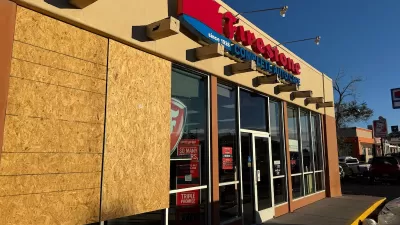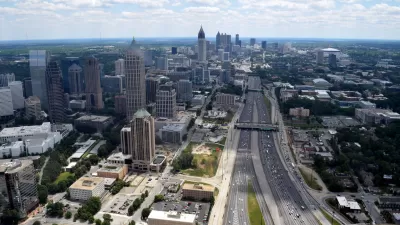A new building by Rem Koolhaas in Beijing is part of a wave of modern construction that is changing the tightly-planned urban fabric of the Chinese capital.
"The city planner Edmund Bacon once described Beijing as "possibly the greatest single work of man on the face of the earth." When he was there, in the nineteen-thirties, you could still see that the city, from the walls surrounding it to the emperor's Forbidden City at its heart, was conceived as a totality-a work of monumental geometry, symmetrical and precise. Even the hutongs, the warrenlike neighborhoods of small courtyard houses set along alleyways, which made up the bulk of the city's urban fabric, were as essential to Beijing as the temples and the imperial compound, which has the same intricate mixture of courtyards and lanes. Bejing was all of a piece.
It couldn't last forever, and it didn't. Mao Zedong tried to change Beijing into an industrial and governmental center, putting up factories and ponderous administrative buildings. But now Mao's Beijing is nearly as much a part of the past as the Forbidden City. The factories are being pushed to the outskirts, and in their place the city has developed a skyline. It isn't like the height-obsessed skyline of Shanghai, or the tight, congested skyline of Hong Kong. In Beijing, the towers are sprinkled all over the place. Most of them are mediocre, and some are ridiculous-a few have pagodalike crowns, to satisfy a former mayor who insisted that new buildings appear Chinese-but a handful are among the most compelling buildings going up anywhere in the world. In Beijing, the latest trend is architecture that will force the world to pay attention, and the result is a striking, unmistakably twenty-first-century city, combining explosive, relentless development with a fondness for the avant-garde."
FULL STORY: Forbidden Cities

Alabama: Trump Terminates Settlements for Black Communities Harmed By Raw Sewage
Trump deemed the landmark civil rights agreement “illegal DEI and environmental justice policy.”

Planetizen Federal Action Tracker
A weekly monitor of how Trump’s orders and actions are impacting planners and planning in America.

The 120 Year Old Tiny Home Villages That Sheltered San Francisco’s Earthquake Refugees
More than a century ago, San Francisco mobilized to house thousands of residents displaced by the 1906 earthquake. Could their strategy offer a model for the present?

Ken Jennings Launches Transit Web Series
The Jeopardy champ wants you to ride public transit.

BLM To Rescind Public Lands Rule
The change will downgrade conservation, once again putting federal land at risk for mining and other extractive uses.

Indy Neighborhood Group Builds Temporary Multi-Use Path
Community members, aided in part by funding from the city, repurposed a vehicle lane to create a protected bike and pedestrian path for the summer season.
Urban Design for Planners 1: Software Tools
This six-course series explores essential urban design concepts using open source software and equips planners with the tools they need to participate fully in the urban design process.
Planning for Universal Design
Learn the tools for implementing Universal Design in planning regulations.
Clanton & Associates, Inc.
Jessamine County Fiscal Court
Institute for Housing and Urban Development Studies (IHS)
City of Grandview
Harvard GSD Executive Education
Toledo-Lucas County Plan Commissions
Salt Lake City
NYU Wagner Graduate School of Public Service





























